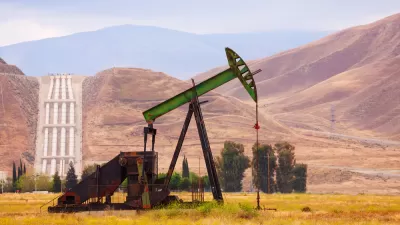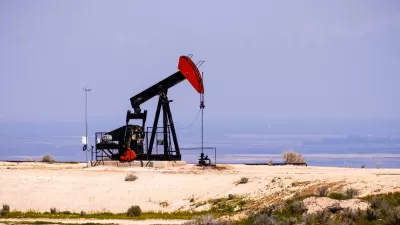The wastewater well from the process of hydraulic fracturing, or fracking, triggered 167 earthquakes in and around Youngstown, Ohio, during a single year of operation, according to research in the Journal of Geophysical Research.

"One of the most profitable areas for fracking lies over the geological formation known as the Marcellus Shale, which reaches deep underground from Ohio and West Virginia northeast into Pennsylvania and southern New York", writes Charles Q. Choi in NBC News.
"The discovery builds on a growing body of scientific evidence linking the use of fracking wastewater injection wells to earthquakes. That includes a string of quakes in central Oklahoma in late 2011, including the most powerful ever recorded in the state, a frightening magnitude 5.7," writes John Upton in Grist Magazine.
"The researchers noted that of the 177 wastewater disposal wells of this size active in Ohio during 2011, only the Northstar 1 well was linked with this kind of seismic activity, suggesting this ability to cause earthquakes was rare."
From the abstract of the study, "Induced seismicity associated with fluid injection into a deep well in Youngstown, Ohio", published in the Journal of Geophysical Research: Solid Earth:
"Over 109 small earthquakes (Mw 0.4–3.9) were detected during January 2011 to February 2012 in the Youngstown, Ohio area, where there were no known earthquakes in the past. These shocks were close to a deep fluid injection well. The 14 month seismicity included six felt earthquakes and culminated with a Mw 3.9 shock on 31 December 2011. ... We conclude that the recent earthquakes in Youngstown, Ohio were induced by the fluid injection at a deep injection well due to increased pore pressure along the preexisting subsurface faults located close to the wellbore. We found that the seismicity initiated at the eastern end of the subsurface fault—close to the injection point, and migrated toward the west—away from the wellbore, indicating that the expanding high fluid pressure front increased the pore pressure along its path and progressively triggered the earthquakes. We observe that several periods of quiescence of seismicity follow the minima in injection volumes and pressure, which may indicate that the earthquakes were directly caused by the pressure buildup and stopped when pressure dropped."
FULL STORY: Confirmed: Fracking practices to blame for Ohio earthquakes

Planetizen Federal Action Tracker
A weekly monitor of how Trump’s orders and actions are impacting planners and planning in America.

Congressman Proposes Bill to Rename DC Metro “Trump Train”
The Make Autorail Great Again Act would withhold federal funding to the system until the Washington Metropolitan Area Transit Authority (WMATA), rebrands as the Washington Metropolitan Authority for Greater Access (WMAGA).

The Simple Legislative Tool Transforming Vacant Downtowns
In California, Michigan and Georgia, an easy win is bringing dollars — and delight — back to city centers.

The States Losing Rural Delivery Rooms at an Alarming Pace
In some states, as few as 9% of rural hospitals still deliver babies. As a result, rising pre-term births, no adequate pre-term care and "harrowing" close calls are a growing reality.

The Small South Asian Republic Going all in on EVs
Thanks to one simple policy change less than five years ago, 65% of new cars in this Himalayan country are now electric.

DC Backpedals on Bike Lane Protection, Swaps Barriers for Paint
Citing aesthetic concerns, the city is removing the concrete barriers and flexposts that once separated Arizona Avenue cyclists from motor vehicles.
Urban Design for Planners 1: Software Tools
This six-course series explores essential urban design concepts using open source software and equips planners with the tools they need to participate fully in the urban design process.
Planning for Universal Design
Learn the tools for implementing Universal Design in planning regulations.
Smith Gee Studio
City of Charlotte
City of Camden Redevelopment Agency
City of Astoria
Transportation Research & Education Center (TREC) at Portland State University
US High Speed Rail Association
City of Camden Redevelopment Agency
Municipality of Princeton (NJ)




























